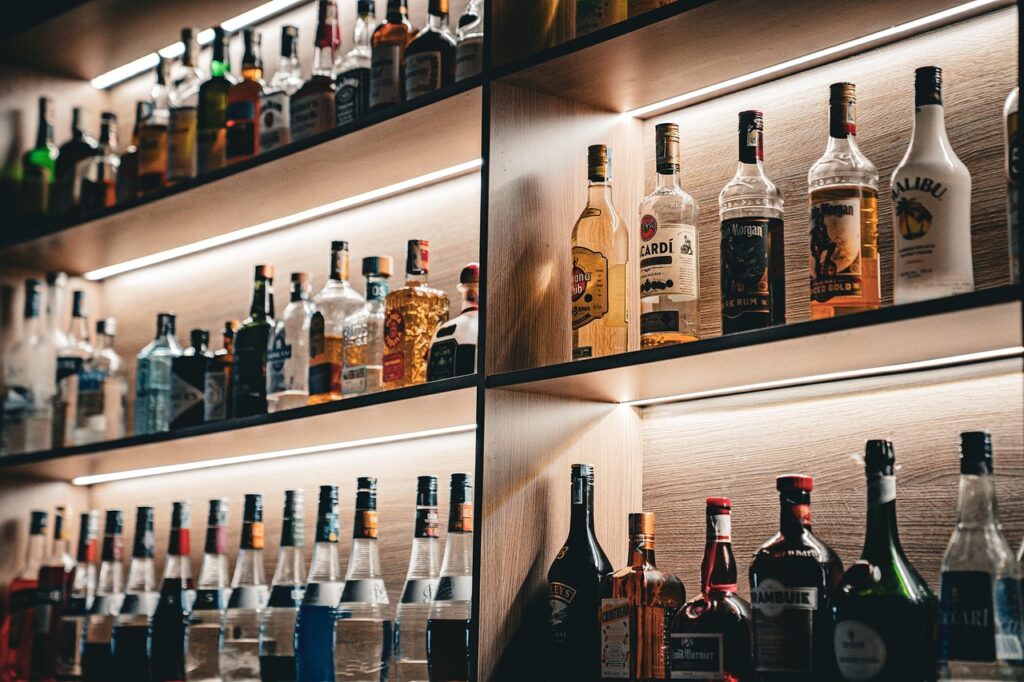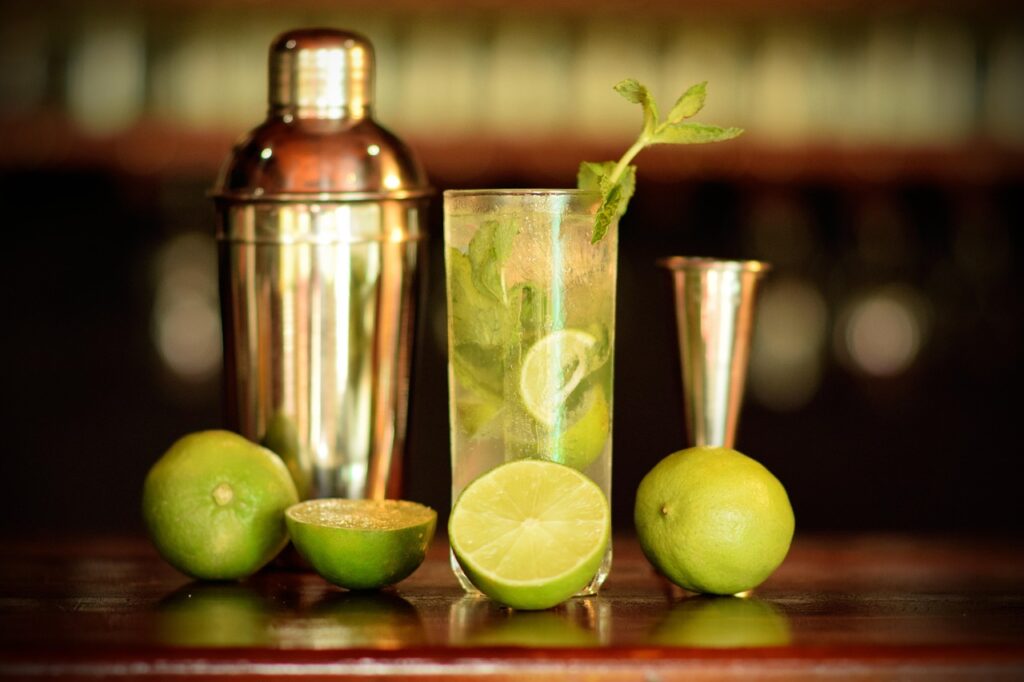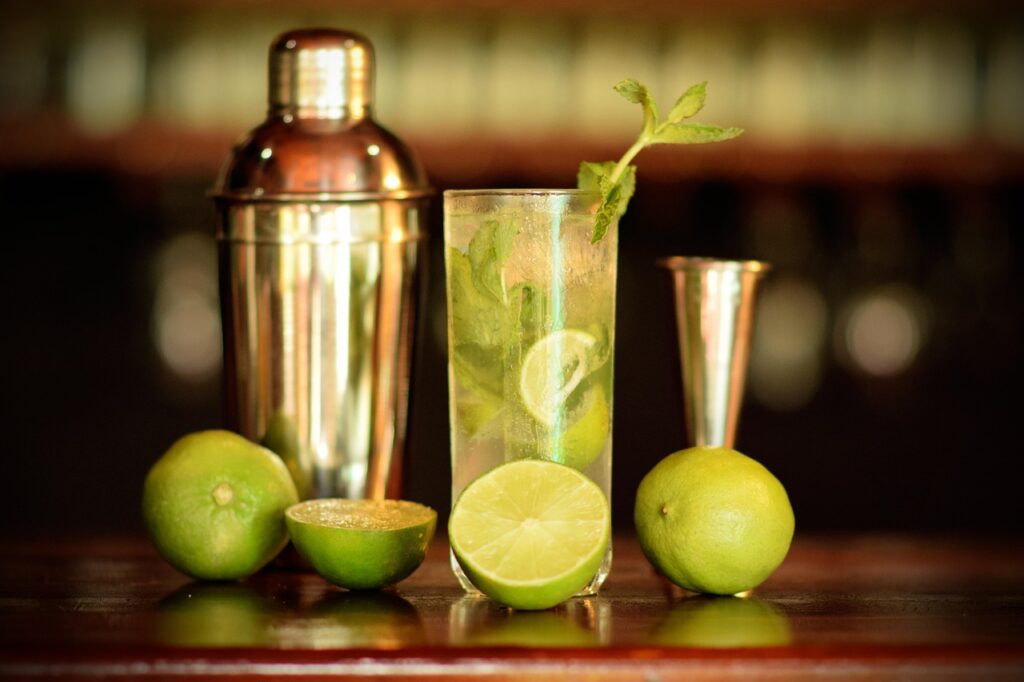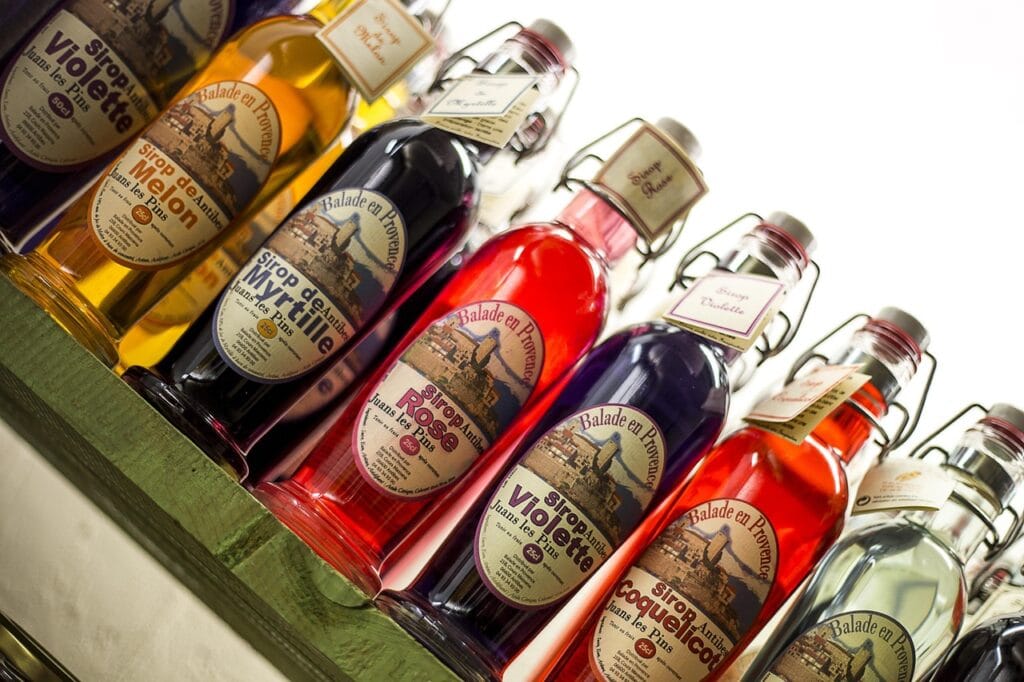Ever wonder what goes on behind that friendly smile when you place your drink order at a bustling bar? You might think it’s all about shaking, stirring, and serving up good times, but let’s be real: bartenders are human, and just like anyone else in a service industry, there are some things that make their job a little harder. In fact, there’s practically a ‘bar code’ out there, and some drink orders definitely ring alarm bells for the folks crafting your cocktails.
We’ve all seen the hilarious TikToks and heard the whispers about certain drinks that bartenders just dread. But what’s the real story? We went straight to the source, chatting with industry veterans like Marisol Delarosa, managing partner of the Brass Monkey, Daniel Meursing, CEO and founder of Premier Staff, Eric Trueheart of Black Yeti Beverage, and Maya Falmagne of Osteria Morini, 2A, and Morimoto. They gave us the inside scoop on the drinks that raise an eyebrow and why your order might be saying more to your bartender than you realize.
So, get ready for some insider knowledge! We’re peeling back the curtain on the first six drink orders that can turn a bartender’s shift from smooth sailing to a full-blown headache. Whether it’s a complicated recipe or a request that screams ‘trouble,’ these are the drinks that truly put their patience to the test. Let’s dive in and see if your go-to made the list!
1. **Mojitos**Mojitos have a long and storied history, charming tourists in Cuba since the 1800s and even making a comeback in the 2020s as Arkansas’s number one drink. They’re undeniably attractive to customers, with their fresh mint, zesty lime, and a refreshing mix of cane sugar, rum, and club soda. But here’s the kicker: this popularity extends only to the customers enjoying them, not to the poor bartenders tasked with their creation.
Daniel Meursing, CEO and founder of Premier Staff, recounts how his bartenders “still shudder at the memory” of a service dominated by mojito orders. The culprit? That seemingly innocuous muddled mint. As he explains, having to muddle mint for each individual drink during a busy period takes significantly more time than a bartender typically has for a single customer, throwing off their rhythm and slowing down service for everyone.
Marisol Delarosa, managing partner of Brass Monkey in New York City, elaborates on the domino effect. Making one or two mojitos isn’t usually an issue, she notes, but “With attractive drinks like that, people will see it and want one and the next thing you know, you’re just a mojito machine for the next several hours.” To escape this minty purgatory, Delarosa has even witnessed bartenders resort to fibbing, claiming they’ve run out of fresh mint just to steer patrons toward simpler, less time-consuming options. It’s a testament to how much this seemingly innocent cocktail can disrupt a busy bar.
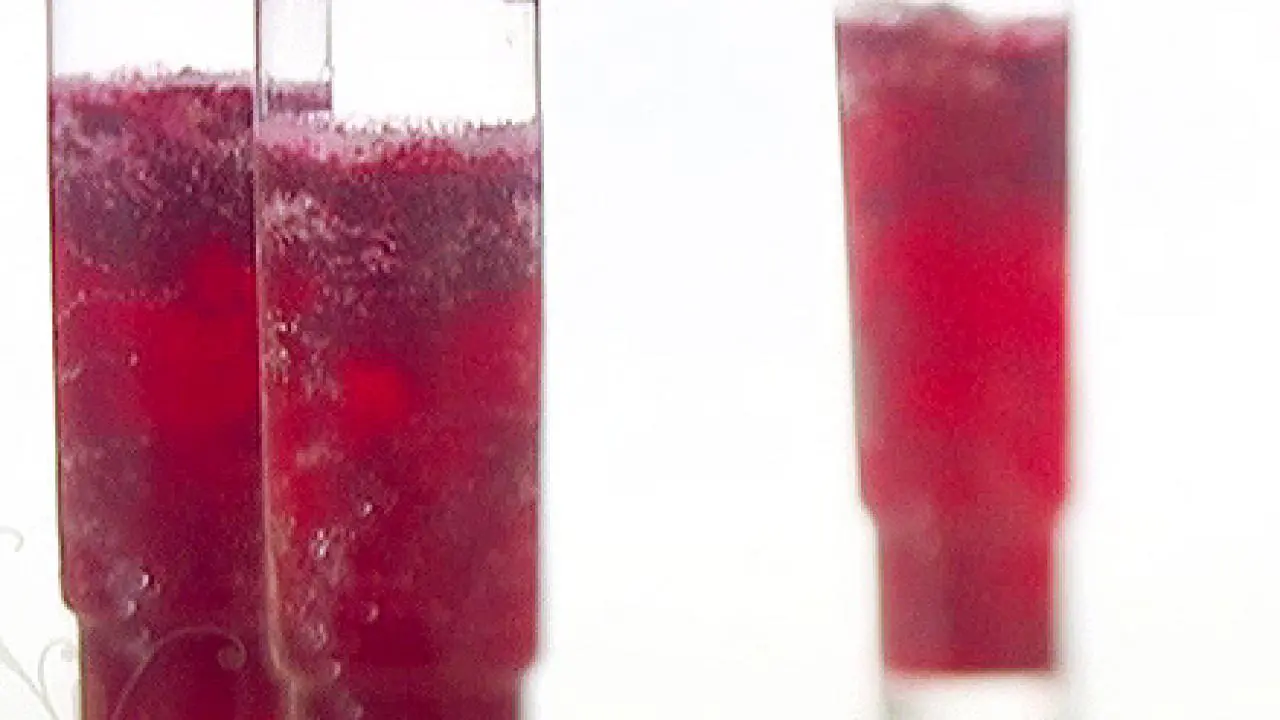
Blended Cherry Mojitos
Ingredients
Equipment
Method
- Place the frozen cherries, crushed ice, mint leaves, lime juice, rum, and simple syrup in a blender. Blend until smooth.
- Pour the mixture into chilled glasses and top with crushed ice. Garnish with lime wedges and cherries.
- Lime Simple Syrup
Notes
Read more about: Backyard Tandoori: Crafting Perfect Spatchcock Chicken at Home
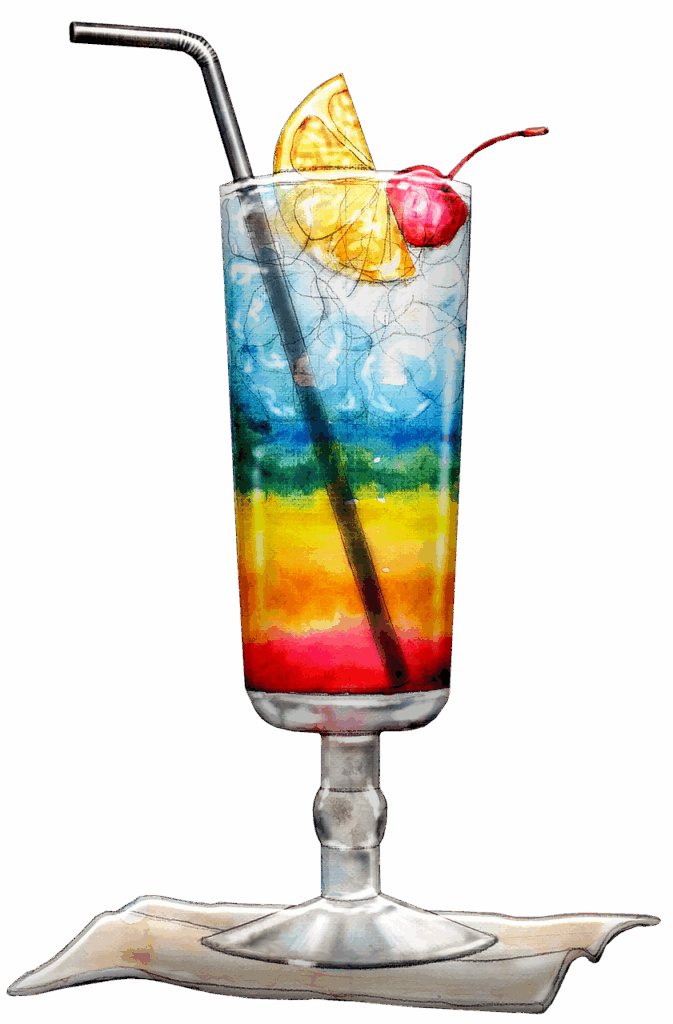
2. **Death in the Afternoon**For literary enthusiasts, the ‘Death in the Afternoon’ cocktail might hold a certain romantic appeal, rumored to be invented by none other than Ernest Hemingway himself and sharing its name with one of his books. But don’t let the sophisticated facade fool you; this drink’s name isn’t just a literary nod—it’s a stark warning about how quickly things can go south when it’s ordered at the bar.
Daniel Meursing hosted a literary-themed party where many attendees eagerly ordered Death in the Afternoon. The drink is a potent blend of absinthe and champagne, and here’s where the “death” part becomes chillingly literal: absinthe is an overproof liquor, meaning its alcohol by volume (ABV) is over 50%. When combined with champagne, which usually has an ABV of 12%, you’re looking at a drink that’s essentially pure alcohol with no real mixers to soften the blow.
For Meursing, a party where this drink flows freely is a recipe for disaster, a guaranteed “wild night” that tends to take a disastrous turn. He even shared a bartender’s grim observation: “When people start ordering these, I know we’re in for a wild night. It’s like watching a car crash in slow motion — you know it’s not going to end well, but you can’t look away.” While Hemingway might have enjoyed its punch, the consequences of drinking Death in the Afternoon make it a genuinely dreaded order for most bartenders.
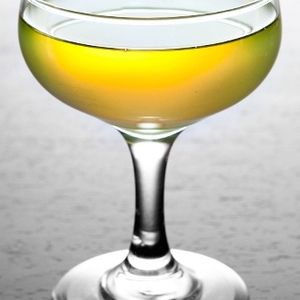
Death In The Afternoon recipes
Ingredients
Equipment
Method
- Ensure all ingredients, especially the Champagne, are thoroughly chilled.
- Measure 1.5 oz of Absinthe into each of four Champagne flutes.
- Slowly top each flute with 4.5 oz of chilled Champagne.
- Serve immediately and enjoy responsibly.
Notes
Read more about: The Poignant Final Texts: 13 Beloved Stars Who Left Us Too Soon and Their Last Heartfelt Messages
3. **A Very Specific Martini**Ordering a martini is often seen as a sophisticated rite of passage for drinkers, offering a plethora of choices: gin or vodka, straight, dirty, with a twist, or even an espresso or lychee martini. The beauty of a martini lies in its customizable nature, allowing patrons to tailor it to their exact preference. However, this flexibility can quickly devolve into a bartender’s nightmare when the requests become excessively particular.
Daniel Meursing, CEO and founder of Premier Staff, recalls a Netflix premiere event where a celebrity placed an order for a martini with what he described as “a laundry list of specifications.” This wasn’t just about gin or vodka; it included precise demands like exactly “three and a half olives,” merely a “whisper of vermouth,” and even the bizarre request that the drink be stirred counterclockwise. Such an intricate and finicky order is simply too much to ask of a bartender, especially when they’re juggling multiple customers during a busy shift.
Martinis are already made to order, requiring careful attention to detail for each individual drink. Adding extra-specific, almost impossible, or frankly peculiar demands only serves to inconvenience the bar staff and disrupt the flow of service. It’s a clear signal that the patron prioritizes their idiosyncratic desires over the realities of a busy bar environment, making this level of specificity a definite red flag for those behind the stick.
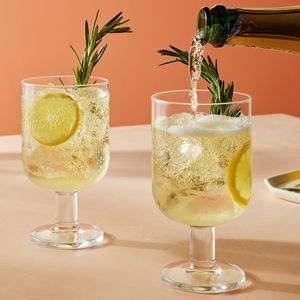
Evergreen Spritz
Ingredients
Equipment
Method
- Gather all ingredients and ensure they are well-chilled.
- Fill a wine glass or highball glass with fresh ice.
- Measure 1.5 ounces of blanc vermouth (Martini Ambrato, Lo-Fi Dry, or Cocchi Americano) and pour into the iced glass.
- Add 4 dashes of orange bitters to the vermouth in the glass.
- Add 0.25 ounces of freshly squeezed lemon juice to the glass.
- Gently stir the mixture with a bar spoon for about 10-15 seconds to combine the ingredients and thoroughly chill them.
- Top the glass with dry sparkling wine, pouring slowly to preserve effervescence, to your preferred taste.
- Garnish the drink with a fresh rosemary sprig and a carefully cut lemon wheel.
- Serve immediately and savor the refreshing Evergreen Spritz.
Notes
Read more about: Jennifer Aniston’s Ageless Blueprint: Unpacking Her Science-Backed Wellness Routine for Enduring Vitality and a Thriving Career
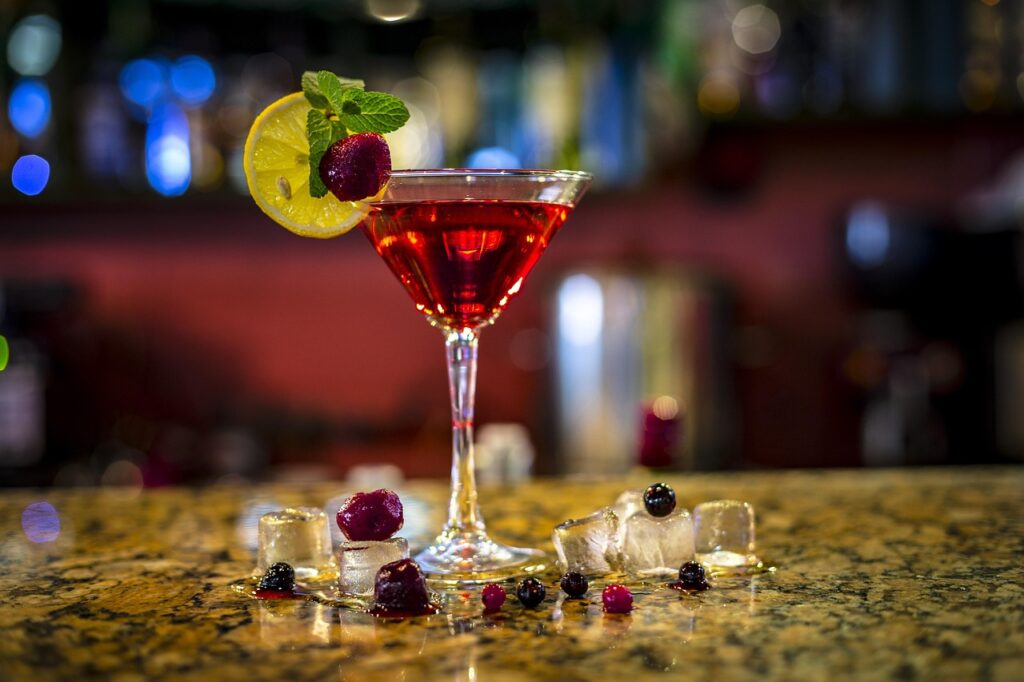
4. **A Confusing Virgin Cocktail**Virgin cocktails, or mocktails, are a fantastic option for those who choose not to drink or can’t, allowing them to participate in social outings and enjoy flavorful beverages without alcohol. With the increasing availability of non-alcoholic wines and beers, finding a suitable booze-free option at a bar is becoming easier than ever. However, the concept of a ‘virgin’ cocktail can sometimes lead to misunderstandings, creating awkward moments for both the customer and the bartender.
Daniel Meursing of Premier Staff highlights this confusion, noting that some people simply don’t understand how to properly order a non-alcoholic version of a drink. He shared an instance where a guest at an event asked for a “virgin gin and tonic.” As Meursing points out, if you remove the gin, you’re quite literally left with just tonic water, which is, by its very nature, non-alcoholic. It’s akin to ordering a “virgin rum and coke,” which would just be a soda—the alcoholic component is the defining ingredient.
In such situations, bartenders are left to interpret the guest’s intent, trying to deduce what they truly want beyond just tonic water. To avoid this predicament, Meursing suggests ordering a non-alcoholic version of a drink that has a more complex flavor profile beyond its spirit, like a watermelon mint margarita mocktail. This type of order still delivers a sophisticated taste experience without forcing the bartender to guess at your desires, ensuring a smoother and more enjoyable transaction for everyone.
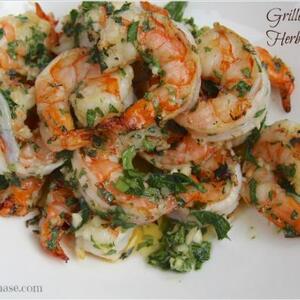
Grilled Garlicky-Herbed Shrimp
Ingredients
Equipment
Method
- Finely chop coriander and parsley, mince garlic, and zest the lemon.
- In a medium bowl, combine the chopped coriander, parsley, minced garlic, lemon zest, chili pepper flakes (if using), and extra virgin olive oil.
- Add the peeled jumbo shrimp to the bowl with the marinade and toss gently to ensure all shrimp are thoroughly coated.
- Allow the shrimp to marinate at room temperature for at least 15-30 minutes, or refrigerate for up to 1 hour for deeper flavor.
- Preheat your grill or grill pan to medium-high heat.
- Thread the marinated shrimp onto grilling skewers, ensuring they are evenly spaced.
- Lightly oil the preheated grill grates to prevent the shrimp from sticking.
- Place the shrimp skewers on the hot grill and cook for 2-3 minutes per side, until the shrimp turn pink and opaque and are cooked through.
- Remove the grilled shrimp from the skewers.
- Serve the grilled garlicky-herbed shrimp immediately, garnished with fresh herbs or a lemon wedge if desired.
Notes
Read more about: Tom Cruise’s Worst Reviewed Movies: 15 Films Critics Hated
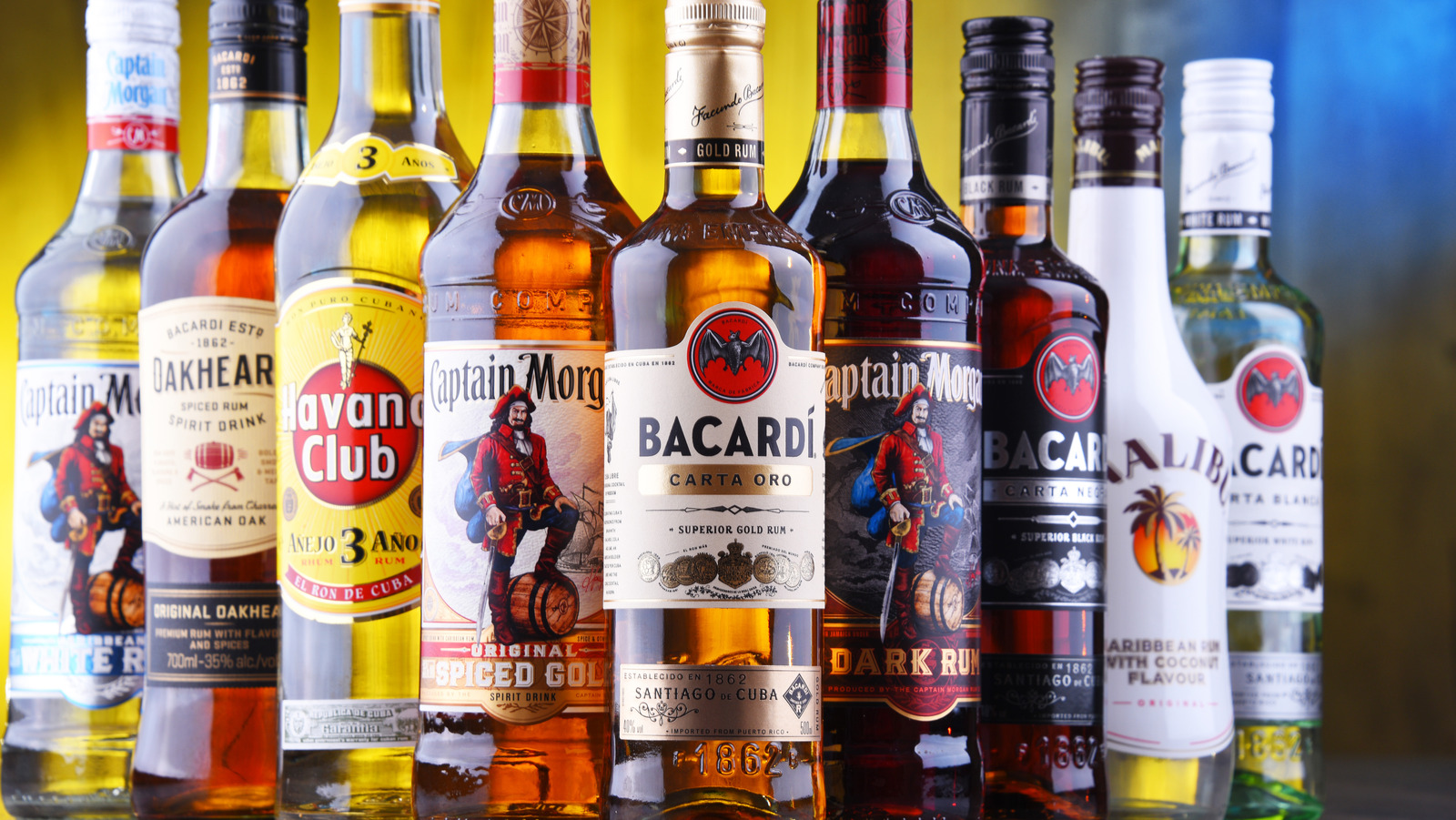
5. **A Rum and Coke with Rum on the Side**When ordering a simple, two-ingredient drink like a rum and coke, trusting your bartender is paramount, as Marisol Delarosa, managing partner at Brass Monkey, emphasizes. At her establishment, a standard rum and coke includes a generous 2 ounces of rum, topped off with coke. This ensures a consistent, balanced drink that customers expect.
However, Delarosa once encountered a patron who, in an attempt to manipulate the system and get more liquor for their money, ordered a coke with a shot of rum on the side. The customer, looking pleased with himself, even proudly declared to his friend, “See, I figured them out.” What this patron failed to realize, Delarosa explains, was that by not trusting the bar staff, he was actually getting less for his money. Their shot glasses hold 1.5 ounces, meaning he received half an ounce less rum than he would have in a standard rum and coke.
Furthermore, the financial hit was significant: a rum and coke would have cost $11, but by ordering separately, he paid $10 for the shot of rum and $3 for the soda, totaling $13 for less alcohol. Delarosa believes this behavior stems from a nostalgic longing for the days of free-poured drinks, but with modern practices, bartenders are increasingly measuring their pours to maintain recipe integrity and consistency. Drinks taste good because they follow a specific recipe, and trying to bypass this by ordering separate components or making requests like “less ice” or a “taller glass” ultimately works against the customer, showing a lack of trust and understanding of how a bar operates.
Read more about: Remember These? A Trip Down Memory Lane with 14 U.S. Foods That Vanished Too Soon!
6. **A Ramos Gin Fizz**The Ramos Gin Fizz is a legendary cocktail, famously popularized by former Louisiana Governor Huey Long, especially in New Orleans. It’s a drink with a rich history and a unique, frothy texture that makes it a true showstopper. However, this isn’t a cocktail you should order at just any bar, especially during peak hours, unless you’re aiming to annoy your bartender.
Eric Trueheart, co-founder of Black Yeti Beverage, explains why this drink is such a potential source of frustration. The Ramos Gin Fizz is notoriously complex, calling for a lengthy list of ingredients including gin, simple syrup, heavy cream, lemon and lime juice, orange flower water, egg white, and club soda. Some of these, like orange flower water and heavy cream, aren’t always standard behind-the-bar staples, and requesting them can disrupt a bartender’s flow, particularly during a busy rush.
But the real kicker is the shaking time. The original recipe for a Ramos Gin Fizz demands it be shaken for an astounding 12 to 15 minutes. Trueheart emphatically states that this is simply “not doable for most bartenders.” Even an “adequate 45 seconds is pushing it” at a busy bar, where such a lengthy preparation time would “drive everybody crazy.” Trueheart offers a golden rule: if a Ramos Gin Fizz isn’t explicitly on the menu, don’t order it. If it is, however, go for it! It means the establishment is likely proud to make it and is prepared for the effort involved, indicating it’s the right place to enjoy this intricate, frothy delight.
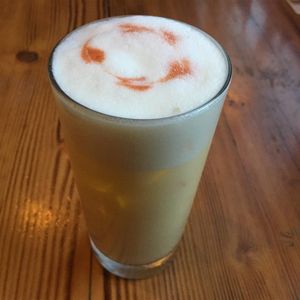
Ramos Gin Fizz
Ingredients
Equipment
Method
- Combine gin, half-and-half, lemon juice, lime juice, white sugar, egg white, orange flower water, and vanilla extract in a cocktail shaker.
- Perform a “dry shake” by shaking vigorously without ice for at least 60-90 seconds to fully emulsify the egg white and create a rich, frothy base.
- Add 1.5 cups of ice to the shaker.
- Perform a “wet shake” by shaking vigorously again for another 30-60 seconds until the mixture is thoroughly chilled and further aerated.
- Strain the mixture into a chilled highball glass.
- Slowly top the drink with 1 fluid ounce of very cold club soda, or as needed, allowing the iconic frothy head to rise generously above the rim of the glass.
- Serve immediately to enjoy its unique texture and flavor.
Notes
Read more about: Hold My Beer: These 14 Cars Went From Automotive Icons to Total Cringe Fails and We’re Not Sorry
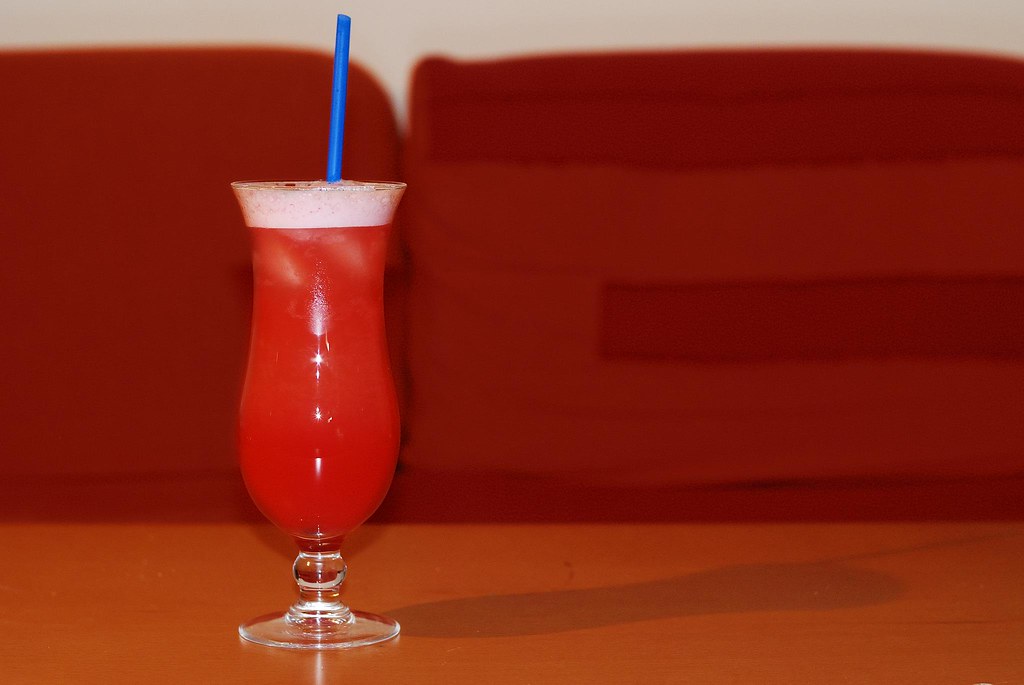
7. **Sex on the Beach**Ah, the Sex on the Beach. This iconic cocktail undeniably had its moment, basking in the sun-drenched glow of the 1980s. While its exact origins are a bit murky – some say Florida, others point to TGI Fridays when that chain was the king of mixed drinks – its popularity then was undeniable. However, according to Eric Trueheart of Black Yeti Beverage, this fruity concoction made with vodka, peach schnapps, orange juice, cranberry juice, and crème de cassis, really should have stayed in that bygone era. It’s a taste of nostalgia that often leaves bartenders with a sigh.
Ordering a Sex on the Beach, Trueheart bluntly states, “flags you as an unsophisticated, novice drinker.” Ouch! It’s not just the name, which definitely doesn’t scream sophistication, but also the overwhelmingly sugary profile and the dated quality of the drink itself. For many behind the bar, it’s a clear signal that the patron’s primary goal is less about savoring a well-crafted cocktail and more about simply getting drunk. Trueheart even quipped that “It’s what college students drank before they invented BuzzBallz,” which, if you’ve ever seen a BuzzBallz, really puts it into perspective!
This sentiment isn’t isolated to the Sex on the Beach. Marisol Delarosa, managing partner at the Brass Monkey, echoed similar frustrations with other intensely sweet, low-alcohol-taste drinks like Dirty Shirleys and Green Tea shots. “To me this is just a sign of the overall movement for people to not want to taste the alcohol they are drinking,” Delarosa shared. So, if your go-to is something that masks the spirit entirely, just know that your bartender might be mentally filing it under ‘amateur hour.’ It’s all about finding that balance between enjoying a sweet treat and appreciating the craft of a cocktail.
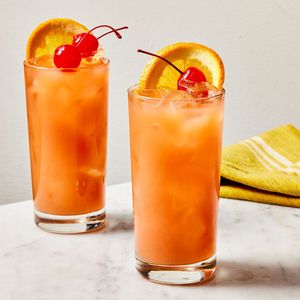
Sex on the Beach
Ingredients
Equipment
Method
- Gather all specified ingredients and your bar tools.
- Fill a highball glass completely with fresh ice to ensure maximum chill and minimal dilution.
- Using a jigger, precisely measure 1 fluid ounce of vodka and pour it directly into the ice-filled highball glass.
- Measure 1 fluid ounce of peach schnapps with the jigger and add it to the glass.
- Carefully add 3 fluid ounces of high-quality orange juice to the mixture in the glass.
- Pour in 3 fluid ounces of cranberry juice, completing the liquid base.
- Gently stir all ingredients together in the glass using a bar spoon until thoroughly combined and well-chilled.
- Garnish the cocktail with an orange slice or wedge, and optionally, a few fresh cranberries for an appealing presentation.
- Serve immediately and responsibly to enjoy the refreshing flavors.
Notes
Read more about: Totally Tubular Rewind: 12 Underrated ’90s Movies That Are Still Pure Gold (and You NEED to Watch Now)
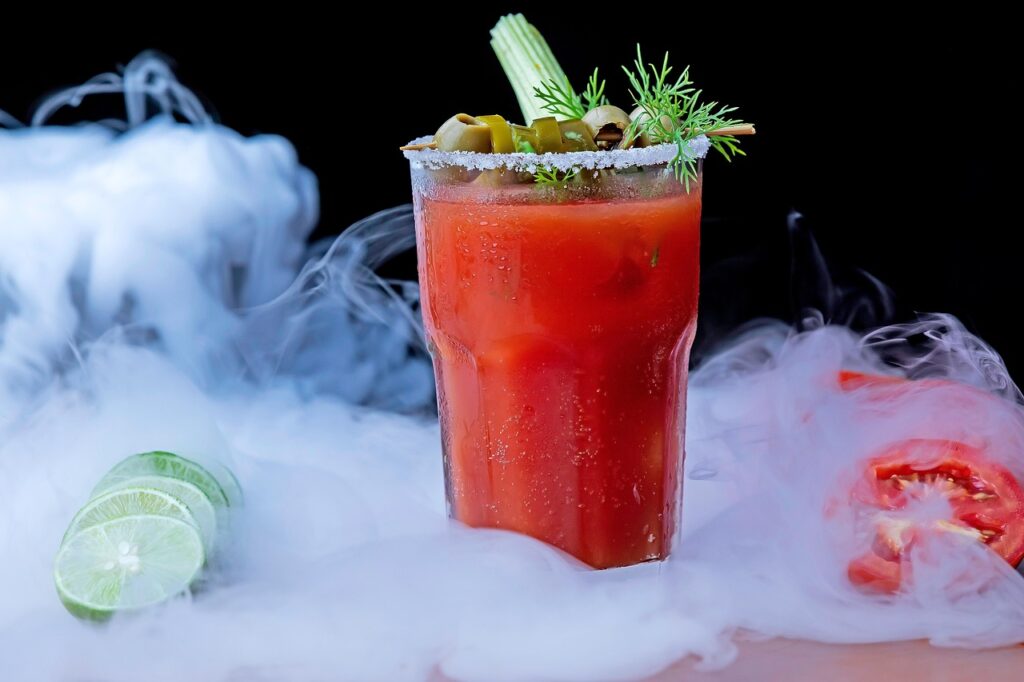
8. **Bloody Marys outside of brunch hours — and also White Russians**Here’s where a little bit of social awareness and bar etiquette come into play. Marisol Delarosa from the Brass Monkey brought up this interesting point, emphasizing that patrons sometimes lack understanding about when and where certain drinks are appropriate. Just as you wouldn’t expect a dive bar to whip up a Ramos Gin Fizz, there are unspoken rules about time-sensitive cocktails. The Bloody Mary, with its savory blend of vodka, lemon juice, salt and pepper, horseradish, Tabasco, Worcestershire sauce, and tomato juice, is the quintessential brunch drink. It truly sounds like a meal in a glass, making its appearance after brunch hours a bit of an oddity.
Beyond the sheer “vibe” mismatch, there are practical reasons why a Bloody Mary outside of brunch can be a headache. With its many ingredients, this cocktail demands more preparation time than your average drink. Bartenders are typically set up for this challenge during dedicated brunch shifts; after those hours, the various components are often put away. Digging them out and re-setting up just for one late-night Bloody Mary is incredibly inconvenient and disrupts the bar’s flow, earning it the Reddit-dubbed title of “bartender’s nightmare” after a certain time of day. So, while you’re free to order what you like, just remember that timing can be everything.
Delarosa also folds White Russians into this category of questionable bar etiquette, stating, “If you order a White Russian at any time, you probably don’t have enough social awareness.” While she acknowledges this might be a personal opinion honed over two decades in the New York City bar scene, her point stands: dulling an alcoholic spirit with milk or cream, as a White Russian famously calls for, can interfere with the integrity of the spirit itself. It suggests a lack of appreciation for the nuances of alcohol flavor that many seasoned bartenders pride themselves on.
But it’s not just about taste; there are also genuine practical concerns with White Russians. Milk and cream aren’t known for their endless shelf life, raising questions about freshness. Bartenders may prefer to avoid serving them to reduce the risk of a patron ingesting spoiled dairy. Plus, as one Reddit commenter pointed out, retaining “fresh milk (or) cream every week” for a drink that’s ordered so infrequently is a costly endeavor for bars already operating on thin profit margins. So, unless you’re absolutely certain the bar frequently slings White Russians, perhaps consider a different order for the sake of your immune system and the bar’s bottom line.
9. **Rounds of shots — especially the disgusting Bar Mat Shot**You might be thinking, “What’s the harm in ordering a round of shots when I’m at a bar?” And you’re not entirely wrong! While ordering shots generally raises *some* alarm bells for bartenders, they’re not always the worst red flags. It really boils down to the *type* of shot you’re requesting. Marisol Delarosa from the Brass Monkey filled us in on this, noting that while White Tea shots (which swap whiskey for vodka, unlike the Green Tea shot) definitely scream “amateur drinker” to the bartender, she tries to hold off on judgment.
Delarosa understands that these types of shots are popular for the same reason many flavored seltzers are: they’re an easy way to take the edge off and they taste pretty good while doing it. So, for your average round of flavored shots, a bartender might just be paying a little more attention, but it’s not necessarily shift-ruining. It’s when things take a truly bizarre turn that the alarm bells start ringing with full force.
And what’s that truly bizarre turn, you ask? According to Delarosa, one incredibly unfortunate shot that’s been trending is the utterly repulsive “bar mat shot.” Yes, you read that right. She described it as a request where “Someone will request to drink the runoff from all of the liquid that accumulates on a bar mat over the course of the night, poured from the mat into a shot glass.” Just let that sink in for a moment.
This particular “drink” is, without a doubt, going to send multiple red flags soaring for your bartender, and for very good reason. It should go without saying, but health inspectors everywhere also strongly urge drinkers to *never* order this shot. The mix of spilled alcohol, syrups, water, and whatever else has accumulated on a bar mat throughout a busy night is not just unappetizing; it’s a serious health hazard. So, while a round of Fireball might just get you a raised eyebrow, a bar mat shot will earn you a look of genuine horror and concern.

10. **The Espresso Martini and Aperol Spritz**Let’s talk about the drinks that are absolutely everywhere right now: the Espresso Martini and the Aperol Spritz. We know them, we love them, and they’re practically Instagram celebrities! These two cocktails are undeniably trending for Summer 2024, with the Espresso Martini boasting an ordering growth of 50%, and the Aperol Spritz currently holding the title of most popular cocktail in the United States as of June 2024, according to Coffeeness via Forbes. You can barely scroll through social media without encountering one or both of these vibrant, chic beverages, which means that nearly every bartender across the U.S. is probably making them on repeat.
While Marisol Delarosa of the Brass Monkey believes everyone should genuinely enjoy the drink they like, she also acknowledges the bartender’s perspective on these viral sensations. She notes that some bartenders “think whatever is having a moment in cocktail culture is a bit of a red flag because it sort of shows that the person [ordering] isn’t that original.” It’s a sentiment born from the constant repetition and the feeling that patrons are simply chasing the latest trend rather than exploring their own preferences.
On the flip side, Delarosa also finds a certain beauty in the widespread appeal of these trendy cocktails, viewing them as a sign that “as a culture, we have come to agree on something.” There’s certainly something to be said for shared experiences! However, it’s a truth universally acknowledged that not all bartenders will share this optimistic view. For many, repeatedly crafting the same popularized drinks can become, well, annoying. As Maya Falmagne, who works at Osteria Morini, 2A, and Morimoto, succinctly put it: “If you walk into a bar and order the latest thing that’s cool on TikTok, the bartender will probably judge you.” So, for those of us (guilty as charged, fellow Espresso Martini lovers!) who adore these popular pours, it’s an alarm bell we might just have to learn to live with.
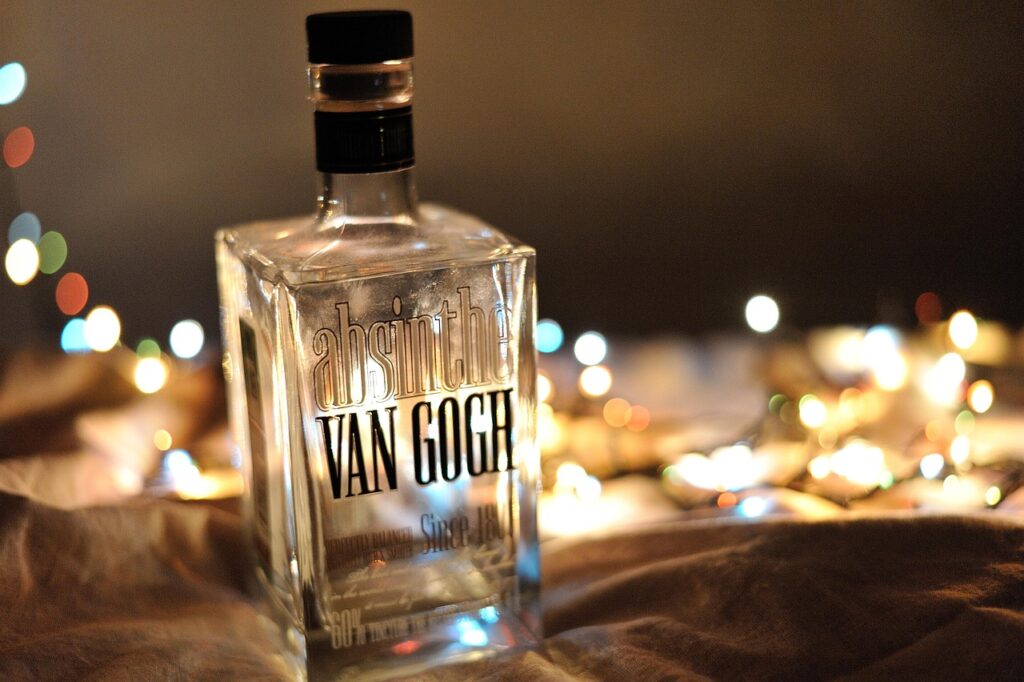
11. **Angel Shots**Now, this particular “drink order” is designed to ring alarm bells for a bartender, and that’s precisely its vital purpose. An Angel Shot isn’t actually a shot, or even a drink in the traditional sense. Instead, it’s a discreet code that a patron can use at a bar to signal to staff that they feel unsafe, need help, or believe they might be in danger. It’s an incredibly important tool in ensuring customer safety within nightlife environments.
I personally encountered an Angel Shot ordering guide displayed prominently in the stalls of a women’s restroom at a restaurant in upstate New York, which really hammered home its importance. At that specific establishment, the instructions were clear: ordering the Angel Shot “neat” meant you wanted a staff member to escort you safely to your car. If you ordered it “with ice,” the bartender understood that you needed them to call you a cab or a ride-share service. And most critically, if you asked for an Angel Shot “with a lime,” it signaled an immediate need for the police to be called to the establishment.
It’s important to understand that the specific meanings behind each Angel Shot order specification can vary slightly from bar to bar. However, the overarching concept remains the same, and what’s truly reassuring is that many bars throughout the United States have staff who are well aware of the Angel Shot protocol, or some variation of it. They are trained and ready to assist anyone who uses this discreet but powerful signal for help, turning a potentially dangerous situation into one where safety is prioritized. It’s a testament to the proactive measures bars are taking to protect their patrons.
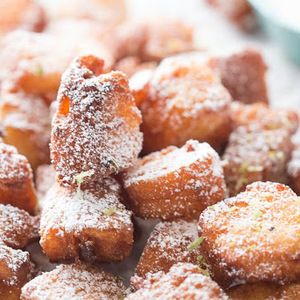
Fried Tequila Shots recipes
Ingredients
Equipment
Method
- Cube the store-bought angel food cake into uniform bite-sized pieces.
- Place the cake cubes in a mixing bowl and gently pour ¾ cup tequila over them, ensuring all pieces are moistened. Let soak for 15-20 minutes, turning occasionally.
- While the cake soaks, prepare the lime glaze: In a separate small bowl, whisk together 1 cup powdered sugar, 1 tablespoon lime juice, and 3 tablespoons milk until smooth. Adjust consistency if needed.
- Heat oil in a deep fryer or heavy-bottomed pot to 350-375°F (175-190°C).
- Carefully remove the soaked cake cubes from the tequila, allowing any excess liquid to drip off.
- Working in batches, fry the cake cubes for 1-2 minutes until golden brown and crispy on all sides. Do not overcrowd the fryer.
- Using a slotted spoon or tongs, remove the fried cake cubes and place them on a wire rack set over paper towels to drain excess oil.
- Lightly dust the warm fried cake cubes with powdered sugar.
- Arrange the fried tequila shots on a serving platter. Drizzle generously with the prepared lime glaze.
- Garnish with fresh lime zest before serving immediately.
Notes
Read more about: Shhh! You Won’t Believe These 14 Celebrities Secretly Tied The Knot For Years – We’ve Got The Scoop!

12. **Long Island Iced Tea**The Long Island Iced Tea – a true “rite of passage” for many on their journey with alcohol, largely because it’s one of the most effective drinks for feeling the effects of alcohol, and feeling them fast. Marisol Delarosa of the Brass Monkey doesn’t mince words when she says, “No one is ordering a Long Island Iced Tea because they like the way it tastes.” And Daniel Meursing from Premier Staff heartily agrees, noting a chilling observation from one of his own staff members: “When someone orders a Long Island, I start scanning for the nearest security guard.” That’s a pretty clear indicator of what this drink signals to those behind the bar.
Why such a strong reaction? Let’s break down this formidable concoction: it’s typically made with gin, vodka, white rum, tequila, and triple sec. That’s a whopping five different alcoholic components in a single cocktail! This potent mix means patrons are bound to become rowdy, quickly losing their inhibitions and potentially causing issues for both staff and other customers. The sheer volume of spirits in one glass makes it a notorious choice for those looking to get intensely intoxicated, rather than enjoy a pleasant evening out.
Delarosa further elaborates on the underlying motive, stating, “The person [ordering] wants to black out and will probably be loud and obnoxious about getting to that state of drunkenness.” This kind of intention – prioritizing extreme intoxication over an enjoyable experience – is a significant red flag for most bartenders. When a drink’s primary goal isn’t taste or social enjoyment but rather an expedited path to oblivion, it unequivocally rings alarm bells for the professionals tasked with maintaining a safe and welcoming bar environment. It’s a clear signal that the night could go sideways, and quickly.
***
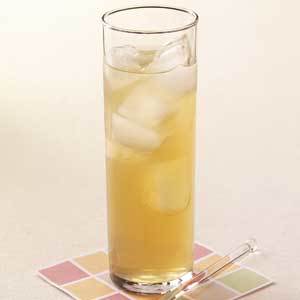
Long Island Iced Tea Recipe
Ingredients
Equipment
Method
- Fill a highball glass generously with fresh ice cubes.
- Measure and pour 1 ounce of vodka into the glass.
- Add 1/2 to 1 ounce of tequila, 1 ounce of light rum, and 1 ounce of triple sec.
- Pour in 1 ounce of sour mix.
- Gently stir all ingredients together with a bar spoon to combine thoroughly.
- Top the mixture with 1/2 ounce of cola.
- Garnish with a lemon wedge or slice, if desired, and serve immediately.
Notes
Read more about: From Rock Stars to Aviators: 14 Enduring Celebrity Disappearances That Still Puzzle Us Today
And there you have it, folks! We’ve journeyed deep into the hearts and minds of bartenders, uncovering the drinks that truly make their shifts a little less smooth. From the overly sweet blasts from the past to the subtle signals of distress, it’s clear that what you order can tell a surprisingly rich story. Beyond just mixing spirits and shaking shakers, these unsung heroes of the nightlife are constantly navigating a complex landscape of customer behavior, operational efficiency, and even safety. So, the next time you step up to the bar, maybe take a moment to ponder your choice. A little thought goes a long way, not just for your enjoyment, but for making your bartender’s day just a little brighter. Cheers to being a more mindful patron!

